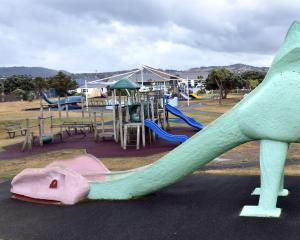Confirmation of funding for the crucial next stage of the controversial project to build separated cycle lanes on central Dunedin's one-way system is expected next month.
But the project will still have a significant hurdle to clear after that before lanes can be built.
The next stage is the preparation of detailed business cases outlining preliminary designs and costs for the three options on the table.
The potentially major hurdle could be gaining approval from the New Zealand Transport Agency and the Dunedin City Council for a preferred business case, but if one does pass muster, construction could begin at the end of next year.
NZTA projects team manager Simon Underwood said he expected to hear next month if $175,000 from NZTA's current work programme would be approved for the business cases to be developed, following endorsement for the spending from the Otago regional transport committee.
If the money was approved, he would advertise for a company to prepare business cases that would include preliminary designs of traffic signals, the form of the traffic-cycle lane separation, footpath improvements, road layout changes, parking changes and landscaping, as well as how much those things were likely to cost and an assessment of what level of improvement they would provide.
The lanes' full cost, expected to be up to $4.5 million, would be paid for by the NZTA, although the council would be responsible for parking and footpath changes and maintenance costs.
The business cases would be based on concepts developed following major public consultation last year and though the process would not likely involve another major public consultation, businesses and property owners along the affected roads would be further consulted during their preparation.
More than 2000 responses were received to last year's public consultation, most in favour of two one-way lanes on the State Highway 1 pair of north-south roads, The Otago Automobile Association also supported the project, preferring the single two-way lane option.
Once the business cases were completed, expected to be about Christmas, one would have to be chosen and be approved by the NZTA, which would have to find it effective and worth the investment, and decide what priority it was for investment.
Importantly, the city council would also have to approve it.
If approval was gained, the project would then proceed to the detailed design stage, which could potentially be done next year, and construction.
As it was an involved process, the NZTA required detailed information to make that commitment, and putting cycle lanes on an urban arterial state highway route was a new concept for New Zealand, Mr Underwood said.












